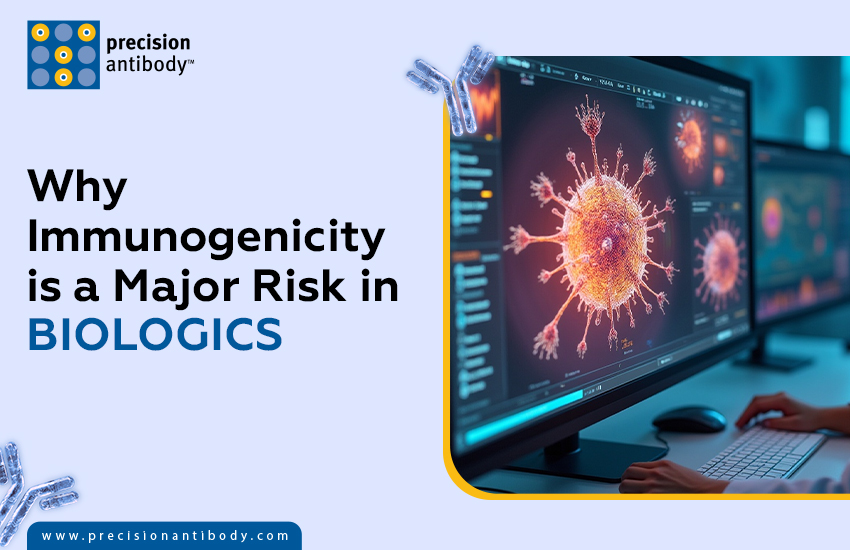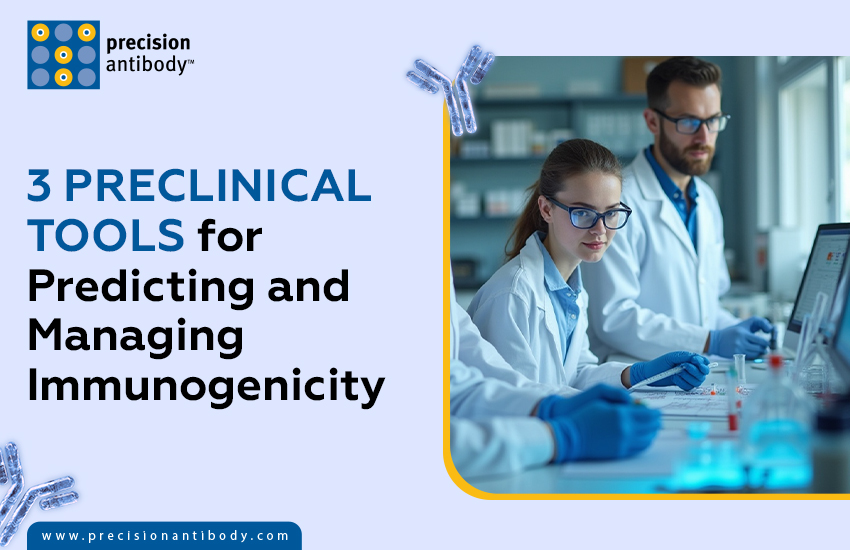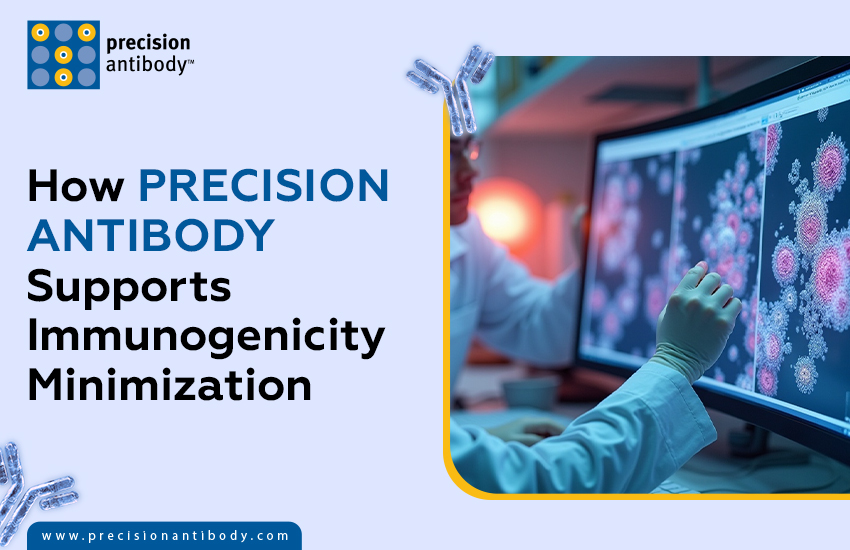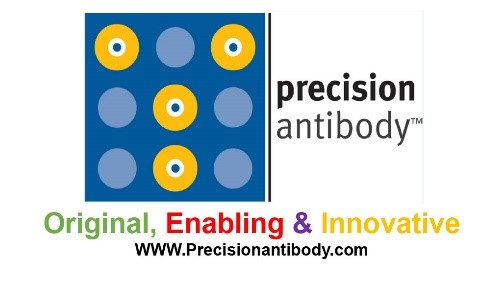Antibody based biologics have really changed the game in modern medicine, providing targeted treatments for things like cancer, autoimmune disorders and infectious diseases. These therapies can really hone in on disease pathways with incredible precision offering patients choices that seemed impossible just a few decades back.
But with their promise comes a constant challenge which is immunogenicity. When therapeutic antibodies cause unwanted immune responses it can lead to serious issues like lower effectiveness, safety problems and expensive delays in clinical trials. For drug developers keeping immunogenicity low is crucial. It can really determine if a biologic makes it to patients.
New developments in antibody engineering are shifting the scene. Researchers are finding ways to cut down immune recognition while keeping therapeutic performance strong by refining sequences, humanizing frameworks and optimizing stability. These strategies aren’t just nice to have anymore, they’re a must in a development environment where regulators want safer, more predictable biologics.
What makes immunogenicity such a significant risk in biologics? What engineering strategies are working best to tackle this issue? Let’s check out the answers below and see how scientific innovation is helping biopharma teams create antibodies that balance efficacy, safety and long-term success.

Therapeutic antibodies have great potential but their effectiveness often relies on the patient’s immune response. If seen as foreign, biologics might cause immune reactions that affect safety and effectiveness. Immunogenicity is a major hurdle in developing antibody drugs.
The impact goes beyond just one patient. Immunogenicity can throw a wrench in clinical programs, adding years to development and driving up costs. Biopharma companies really need to cut down this risk. Getting regulatory approval and staying competitive in a busy market is super important.
Key risks associated with immunogenicity include:
Given these risks immunogenicity is seen as a key quality attribute in regulatory guidelines. Minimizing immunogenicity is a key focus for drug developers.

To reduce immunogenicity, it’s important to carefully optimize antibody design. Recent progress in antibody engineering has allowed us to lower immune recognition while keeping therapeutic effectiveness intact. Here are five effective strategies that drug developers use to tackle this challenge.
Humanization swaps out most of the non human parts with human elements, all while keeping the antibody’s specificity intact.
Fully human antibodies are created using neat technologies like phage display or transgenic mice. They truly replicate the natural antibodies found in humans.
The Fc domain plays a key role in how our immune system interacts and by engineering it, we can help minimize unnecessary immune activation.
This approach looks for and adjusts sequences that could activate T cells.
Changing the glycosylation patterns of antibodies can make them much safer and more effective.
Antibody engineering provides some interesting methods to reduce immunogenicity, like making adjustments at the sequence level and enhancing structure and glycosylation. These methods are super important for making biologics that strike a good balance between safety and how well they work therapeutically.

Antibody engineering is great for reducing the risk of immunogenicity, but it’s super important to have predictive tools to evaluate those designs. These assessments offer us a glimpse into how candidates might behave with patients and help developers refine antibodies before diving into clinical trials.
Computational tools really simplify the process of screening antibody sequences and identifying potential immunogenic regions before we get into lab testing.
Lab-based tests look at how immune cells react to potential treatments, providing practical proof of any immunogenicity risks.
The way a drug can trigger an immune response really depends on how stable its antibodies are and how well it’s formulated. These tests play a crucial role in preclinical development.
Preclinical studies, including in silico predictions, functional assays and stability testing enable developers to identify immunogenicity issues early and create biologics that are safer and more effective.

Immunogenicity can really throw a wrench in a great biologic program. Drug developers need more than just data; they need a partner who gets how to blend antibody engineering, predictive tools and regulatory expectations into a smooth workflow. This is where Precision Antibody stands out.
We focus on designing antibodies that minimise immunogenicity right from the beginning. We use tried-and-true engineering strategies to strike a balance between safety and performance.
Our preclinical tools provide actionable insights that reduce risks early, before they become costly setbacks.
We don’t just run tests; we collaborate with clients to ensure their strategies align with their long-term development goals.
Let’s team up and tackle those complex challenges together.
Immunogenicity isn’t just a technical issue; it really stands in the way of achieving success in clinical settings. Precision Antibody combines two decades of experience with cutting-edge technology to deliver antibodies that navigate the development process quickly and reliably.
When you team up with us, you’re not just bringing on a CRO; you’re gaining a partner who genuinely cares about your success in therapy.
Antibodies are like your body’s own defense team. When they spot a pathogen they attach to its specific antigens, preventing it from getting into healthy cells. This neutralization can quickly halt an infection.
Antibodies do more than just fight off invaders; they also signal to the immune system, bringing in processes like phagocytosis and complement activation. So antibodies not only neutralize pathogens but also boost the immune system to get rid of them better.
Antibody therapeutics have come a long way focusing on minimizing immune reactions while still ensuring they effectively recognize their targets. People often compare two key formats:
The main factor that influences immunogenicity is having non-human or “foreign” sequences in therapeutic proteins. There are quite a few things that can play a part:
All these factors help us understand why immunogenicity is such an important focus for both regulators and developers. If we can spot and reduce these risks early on it’ll make the journey to safe and effective biologics a lot easier.

Led by innovative minds in immunology and the antibody development field, Precision Antibody has been an industry leader for over 20 years. We not only implement a cutting-edge technique in antigen design, antibody development, production, and other analyses, but we are also constantly working on ways to improve and advance technology to match the ever-changing world of science. If you are interested in learning more about Precision Antibody’s Custom Antibody development.
Precision Antibody™ is the forefront of the global Custom Antibody industry & it is led by the innovative minds in immunology and antibody development field.
